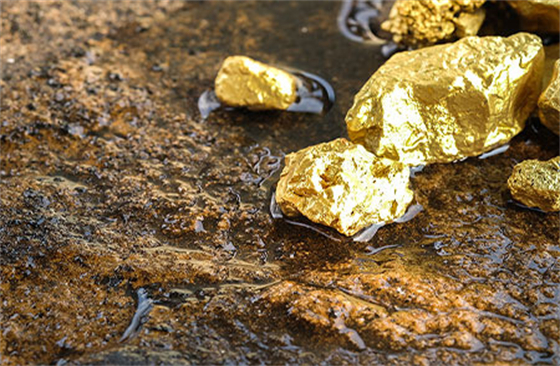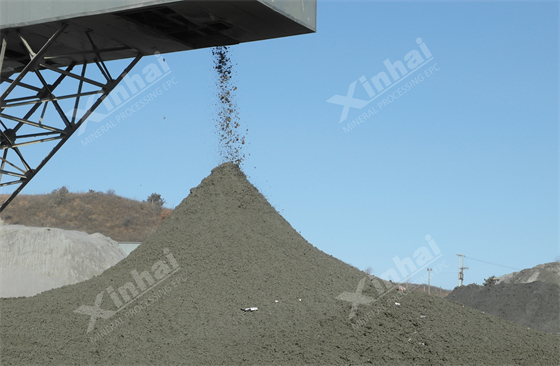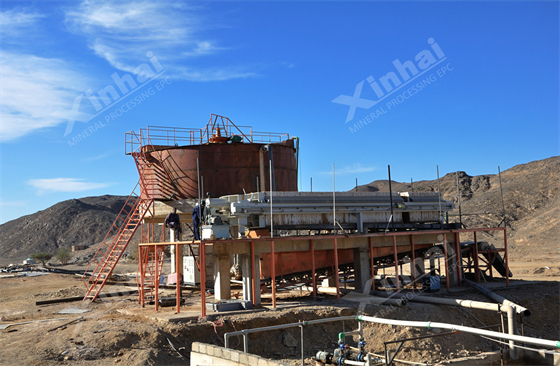
Gold mining has significantly contributed to global economic development by generating substantial wealth. However, as mining operations continue to expand in both scale and speed, the volume of gold mine tailings has increased rapidly—reaching an estimated 14 billion tons worldwide by 2020. During the gold beneficiation process, various chemical reagents are commonly used, resulting in tailings with a high moisture content and potentially hazardous substances. If not properly treated, these tailings can pose serious environmental risks.

Effective dewatering is therefore essential. Advanced dewatering equipment helps remove excess water and harmful chemicals from tailings before disposal or recycling, thereby minimizing ecological impact and supporting sustainable mining practices.
Common gold tailings dewatering equipment includes hydrocyclones, thickeners, dewatering screens, and filter presses. In this article, we analyze different types of gold tailings based on their properties and recommend suitable dewatering solutions for each. Read on to discover how to choose the right equipment and achieve efficient, environmentally responsible tailings management.
Dry tailings disposal—also known as tailings dry stacking—is a process that minimizes the water content in tailings through a combination of dewatering technologies. By using methods such as thickening, filtration, and hydrodynamic separation, the tailings are transformed into a semi-dry, sand-like material with low moisture content.
This dry material can be easily stacked, stored, and transported, significantly reducing the risks associated with conventional tailings dams. In addition to improving operational efficiency, this method helps prevent environmental contamination, offering a safer and more sustainable solution for tailings management.

Gold mine tailings are the residual materials left behind after gold is extracted during the beneficiation process. Their composition and physical characteristics vary depending on the ore type, beneficiation methods (e.g., gravity separation, flotation, cyanidation), and specific process conditions.
1. Composition of Gold Tailings
Fine-grained silicate minerals: such as quartz, feldspar, and clay minerals;
Metal sulfides: including pyrite, arsenopyrite, and chalcopyrite, particularly common in flotation and cyanidation processes;
Residual gold: small amounts of unrecovered gold may remain due to processing limitations;
Chemical residues: such as cyanide, flotation reagents, flocculants, and other process chemicals;
Heavy metals: including arsenic, lead, and mercury, often present in complex or refractory ores;
Moisture: tailings typically retain significant water content, with some underwater tailings exceeding 50% moisture.
2. Physical State of Gold Tailings
Before dewatering: a slurry of fine solids suspended in water;
After dewatering: resembles wet sand or semi-solid material with reduced moisture content;
Storage: tailings are usually transported as slurry through pipelines to tailings storage facilities (e.g., tailings dams) for long-term deposition.

Gold tailings dewatering equipment is primarily used during the final stage of the mineral processing workflow—including thickening, filtration, and drying. The goal is to remove as much water as possible from the slurry to facilitate easier transportation, smelting, or long-term storage.
Because gold tailings vary in particle size, concentration, chemical composition, and processing objectives, different dewatering equipment is required for different types of tailings. Below, we outline the common classifications of gold tailings and the most suitable dewatering equipment for each type.

(1) Gravity Separation Gold Tailings
Characteristics: Coarse particle size, high pulp concentration, and good settling performance;
Recommended Dewatering Equipment: High-efficiency thickener, vacuum disc filter, belt filter press;
Reason for Recommendation: Re-election tailings are coarse and settle easily. A high-efficiency thickener allows for rapid sedimentation, while downstream filtration (e.g., filter press) ensures effective dewatering with minimal equipment wear and low energy consumption.
XinHai Case: Hebei 400 t/d Gold Tailings Dry Stacking Project
(2) Flotation Gold Tailings
Characteristics: Fine particle size, reagent-laden, viscous, and low concentration;
Recommended Dewatering Equipment: Deep cone thickener, belt filter press, chamber filter press;
Reason for Recommendation: Flotation tailings are fine, viscous, and settle slowly. A deep cone thickener facilitates flocculation and extended settling, followed by efficient dewatering using filter presses, which are well-suited for fine, high-viscosity materials.
XinHai Case: Guizhou 700 t/d Gold Tailings Dry Stacking Project
(3) Cyanidation Gold Tailings (CIP/CIL God Processing)
Characteristics: Ultra-fine particles, contains cyanide, with stringent environmental requirements;
Recommended Dewatering Equipment: Deep cone thickener+chamber filter press/belt filter press;
Reason for Recommendation: Cyanidation tailings contain toxic substances and require dry stacking with moisture below 15–20%. A deep cone thickener improves initial concentration, while filter presses ensure low-moisture discharge, meeting environmental standards.
XinHai Case: 120 t/d Gold Tailings Cyanide Removal Plant in Mongolia
(4) Roasted Gold Tailings
Characteristics: High temperature, potentially acidic, and highly corrosive;
Recommended Dewatering Equipment: Ceramic filter, acid-resistant belt filter press
Reason for Recommendation: Roasted tailings may be hot and acidic, requiring corrosion- and heat-resistant equipment. Ceramic filters, which do not use filter cloths, are ideal for high-temperature materials. Belt filter presses must use acid-resistant filter belts.
XinHai Case: Qinghai 450 t/d Gold Ore Processing Project
(5) Reprocessing Gold Tailings
Characteristics: Ultra-fine particles, low concentration, and high impurity content;
Recommended Dewatering Equipment: Efficient-improved thickener+ plate and frame filter press;
Reason for Recommendation: Re-processed tailings are fine, impure, and difficult to dewater. A combination of high-efficiency thickening and high-pressure filter presses is needed to meet moisture content standards and ensure effective solid-liquid separation.
XinHai Case: Burundi 1,200 t/d Gold Ore Processing Plant

Conclusion
This article reviewed the composition of gold mine tailings and introduced suitable dewatering equipment for five common types of gold tailings. Gold tailings are not merely “waste,” but rather a complex challenge involving both resource recovery and environmental responsibility.
Selecting the right dewatering equipment not only lowers operational costs and enhances efficiency, but also supports sustainable mining practices. At Xinhai.C, we uphold the principle of "tailor-made solutions for each mine" and embrace intelligent, eco-friendly technologies to deliver effective tailings treatment solutions worldwide. If you're interested in learning more about gold tailings dewatering or mineral processing, we welcome you to contact us!
To find out more about our products and solutions, please fill out the form below and one of our experts will get back to you shortly.